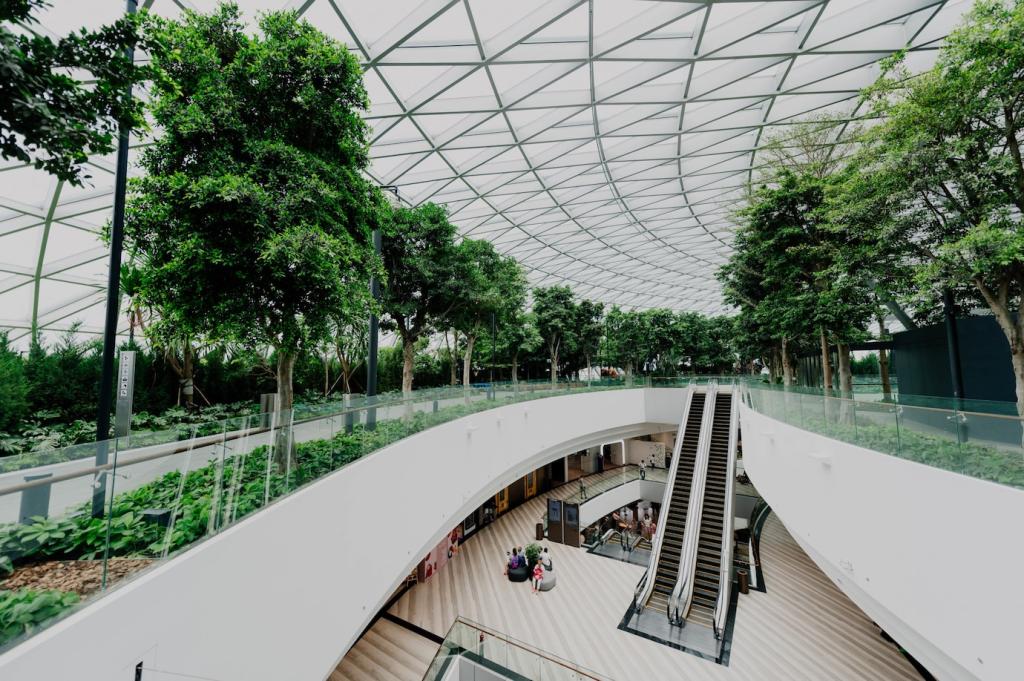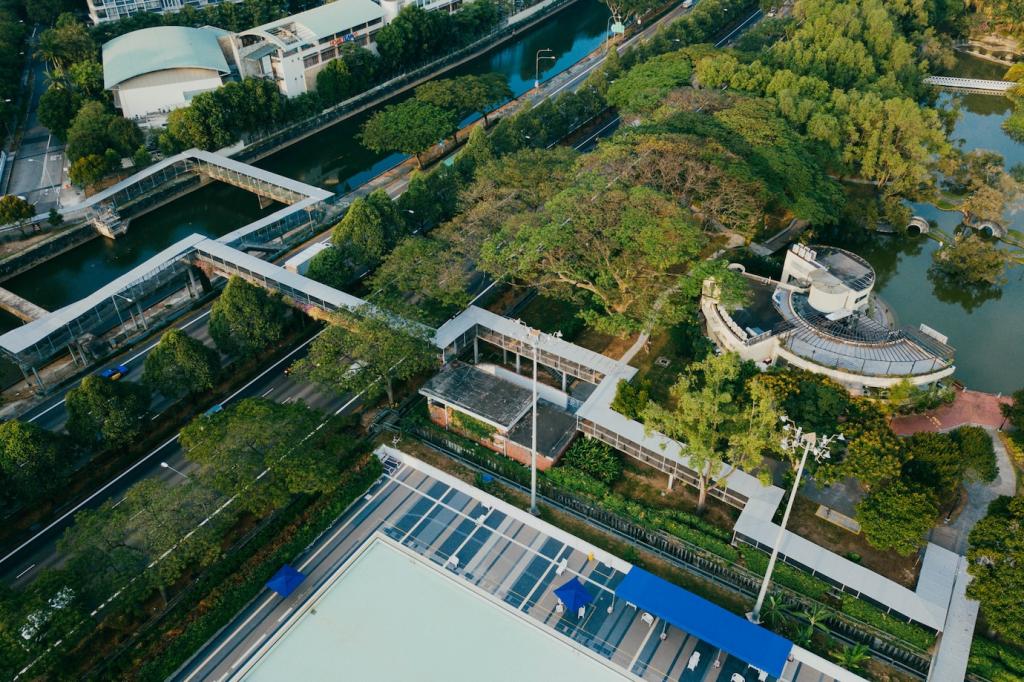Urban Gardening for a Greener City
Urban gardening represents a transformative approach to city living, offering fresh opportunities to enhance both the environment and community well-being. As cities continue to expand, green spaces become more precious, making urban gardening an essential strategy for sustainability and improving urban life. This guide explores the principles, benefits, and inspiration behind nurturing gardens in urban spaces, encouraging individuals and communities to join this movement for a greener city.
The Importance of Urban Gardening
Bringing plants and green spaces into urban environments helps to reduce air pollution, lower local temperatures, and combat the urban heat island effect. The presence of vegetation absorbs carbon dioxide and releases oxygen, which improves overall air quality for city residents. Additionally, urban gardens support local pollinators and enhance biodiversity, which otherwise may be limited in densely built environments. This holistic impact highlights the profound environmental significance of nurturing green spaces within our cities.
Urban gardening isn’t just about the environment; it also directly benefits the health and well-being of city dwellers. Gardens offer residents fresh, home-grown produce, increasing access to nutritious food and encouraging healthy eating habits. Moreover, gardening itself is a form of physical activity, reducing stress and boosting mental health. Green spaces provide areas for relaxation and socialization, fostering a sense of community and improving quality of life in bustling urban neighborhoods.
The creation and maintenance of urban gardens stimulate community spirit, bringing people from diverse backgrounds together. As neighbors collaborate on shared projects, urban gardening creates opportunities for meaningful interactions and shared learning. This collective effort strengthens social ties, revitalizes public spaces, and instills a greater sense of pride in local communities. In essence, urban gardening cultivates not only plants but also the bonds that hold neighborhoods together.
Starting Your Urban Garden
Selecting the Right Space
Urban environments offer a spectrum of unconventional spaces suitable for gardening. From balconies, rooftops, and windowsills to repurposed parking lots and community plots, the choice of space significantly influences what and how you can grow. Assessing sunlight, wind exposure, and weight restrictions helps ensure your garden’s success. Even the tiniest nook can become a productive oasis with a little creativity and proper planning.
Choosing What to Grow
Selecting the optimal plants for your urban garden involves careful consideration of your available space, climate, and personal preferences. Compact and versatile crops such as herbs, salad greens, and cherry tomatoes thrive in containers and require minimal maintenance. Native and drought-resistant species are excellent options for sustainable, low-resource gardening. By starting with plants suited to your urban context, you lay the groundwork for a lush and rewarding garden experience.
Container and Soil Solutions
The foundation of any healthy garden is good soil, and urban gardeners often have to get creative when it comes to containers. Self-watering pots, recycled buckets, or vertical planters can maximize limited room while providing the right environment for roots. Container gardening also allows for superior control over soil quality, drainage, and mobility. Investing in high-quality potting mix and regular soil enrichment ensures your plants receive the nutrients they need to thrive.
Rooftop Gardens: Turning Gray to Green
Planning a Rooftop Garden
Establishing a rooftop garden begins with thorough planning. Structural evaluation is critical to ensure the roof can support the weight of soil, plants, and water. Urban gardeners must also consider irrigation, wind protection, and local building codes. Once these factors are addressed, a thoughtful design can turn a barren rooftop into a thriving ecosystem that improves quality of life for anyone with access to the space.
Environmental Impact
Rooftop gardens offer tremendous environmental advantages for cities. They help manage stormwater runoff, reduce the urban heat island effect, and boost insulation, thereby lowering energy demands for heating and cooling. By absorbing rainfall and providing habitat for wildlife, these gardens contribute to a city’s ecological resilience. Their unique position above the cityscape allows them to have a pronounced and visible green impact.
Community and Private Spaces
Rooftop gardens can serve as quiet retreats for residents, sites for community gatherings, or even small urban farms that provide fresh produce to local residents. Whether managed privately or communally, these elevated gardens foster a sense of place and connectivity among users. They open doors to new forms of urban recreation, from rooftop yoga sessions to shared meals among neighbors, all set against the dynamic backdrop of the city skyline.
Community Gardens: Growing Together
The Role of Community Gardens
Community gardens democratize access to green spaces and locally grown food, offering plots to those who lack personal gardening space. Managed collectively by residents or nonprofits, they empower individuals to take ownership of their urban environments. These gardens also provide educational opportunities, from composting workshops to seed swaps, fostering a culture of sustainability and stewardship.
Building Stronger Neighborhoods
The collaborative nature of community gardening brings neighbors together, creating new connections and strengthening social networks. Through shared responsibilities and successes, participants build trust and mutual support. In neighborhoods facing economic or social challenges, gardens often serve as safe, inclusive gathering places that nurture resilience and shared identity.
Overcoming Challenges Together
Starting and sustaining a community garden is not without challenges, from securing land tenure to managing conflicts and maintaining resources. Successful gardens rely on strong leadership, clear communication, and ongoing community engagement. Overcoming these hurdles can transform gardens into enduring fixtures, year after year, rooted in vibrant community participation.

Vertical gardening involves growing plants on upright structures, such as trellises, green walls, or hanging panels. This approach can be adapted to fit balconies, patios, building facades, and small courtyards. Not only does it save valuable ground space, but it also enables creative design solutions that turn bland surfaces into lush, living canvases. This versatility has made vertical gardening increasingly popular among urbanites seeking to personalize and green their surroundings.

The benefits of vertical gardens extend well beyond aesthetics. They can act as natural air filters, capturing dust and pollutants from the air. These green walls also provide shade, reduce energy consumption by insulating buildings, and muffle urban noise. For those with little access to soil, vertical gardens make it possible to grow flowers, herbs, or vegetables right at home, fostering self-sufficiency and wellbeing.

Setting up a vertical garden requires thoughtful selection of plant species, sturdy structures, and an adequate irrigation system. Modular panels, repurposed pallets, and pocket planters are ideal for smaller spaces. Proper planning ensures water reaches all plants equally and that the chosen species thrive in upright arrangements. With a blend of creativity and practical know-how, almost any urban spot can be turned into a verdant vertical retreat.
Edible Urban Landscapes
Integrating Edibles Into Urban Design
Edible landscapes harmoniously incorporate fruit trees, berry bushes, vegetables, and herbs alongside ornamental plants. Thoughtful design ensures these productive elements are visually appealing while serving a practical purpose. Public parks and sidewalk planters are reimagined to include edible varieties, giving passersby the chance to harvest fresh produce as they walk through the city, reconnecting urbanites to the origins of their food.
Benefits for City Residents
Edible urban landscapes provide city dwellers with free or low-cost access to fresh, healthy food. This accessibility is especially valuable in areas classified as food deserts, where traditional grocery stores might be scarce. The presence of food-producing plants also encourages children and adults alike to learn about nutrition and the natural world, reinforcing positive lifestyle choices and food literacy.
Supporting Urban Food Security
At a time when food systems face increasing pressures, urban edible gardens can bolster local food security by diversifying sources of fresh produce. These initiatives reduce waste by shortening supply chains and making the most of otherwise unused land. Besides environmental advantages, edible urban landscapes cultivate resilience and resourcefulness, empowering communities to feed themselves in more sustainable ways.
Sustainability and Innovation in Urban Gardening
Urban gardeners face unique challenges in managing water resources effectively. Drip irrigation, rainwater harvesting, and the use of drought-resistant plant varieties make urban gardens more water-wise. These techniques not only conserve this precious resource but also maintain lush gardens even during dry spells. Investing in water-smart solutions helps cities adapt to climate change, ensuring gardens remain green and productive for generations to come.

Challenges and Solutions for Urban Gardeners
Managing Limited Space
Space constraints are an inherent part of urban gardening, but they also inspire inventive solutions. Techniques such as vertical gardening, container planting, and intensive square-foot methods allow gardeners to maximize yields in confined areas. Shared spaces like community gardens offer additional opportunities for those lacking private land, proving that creativity often blossoms in tight quarters.

